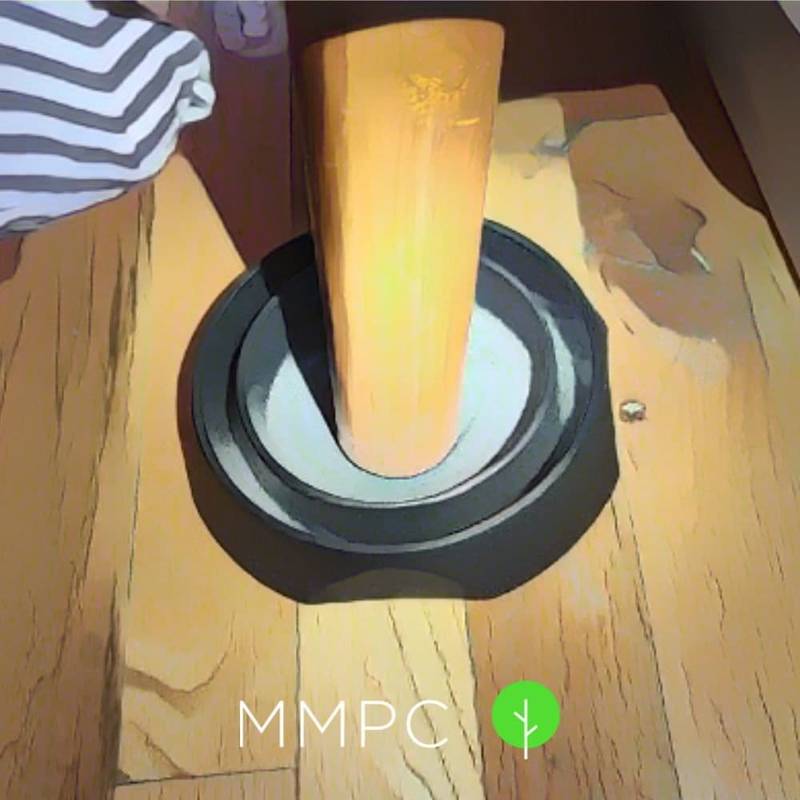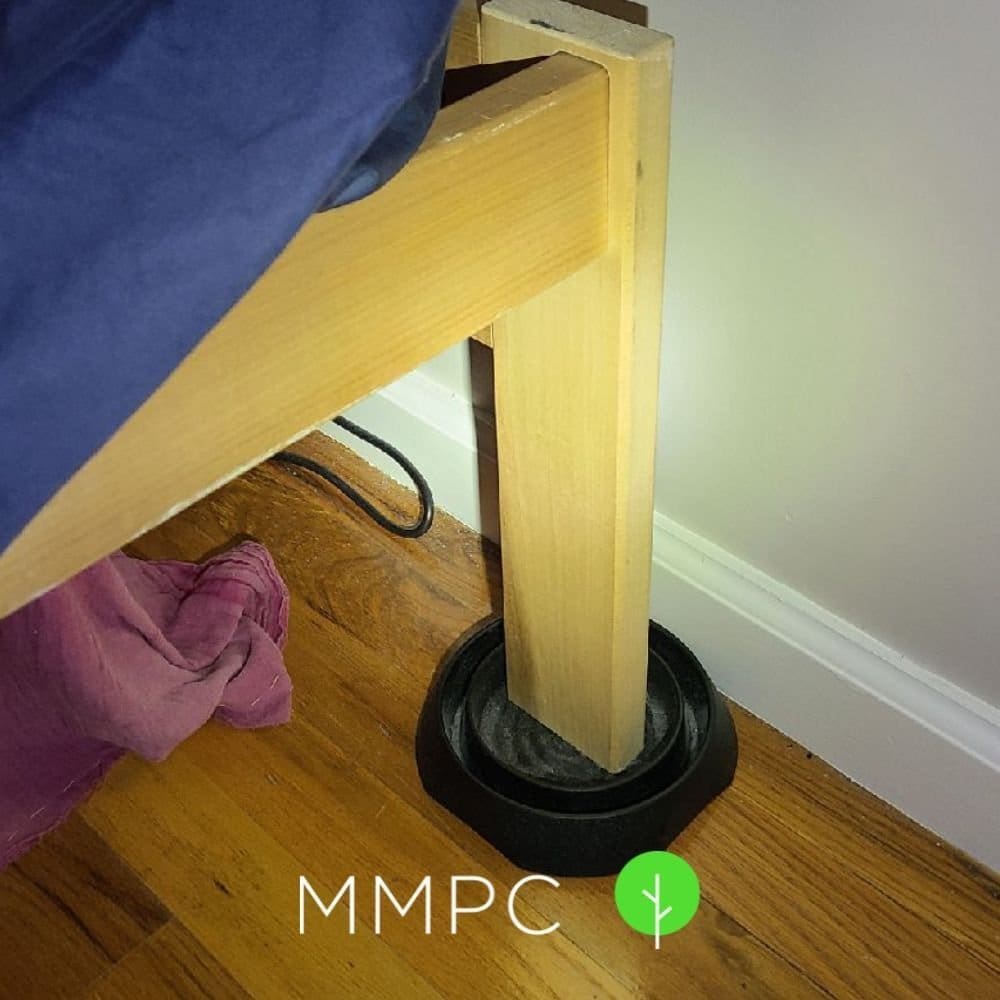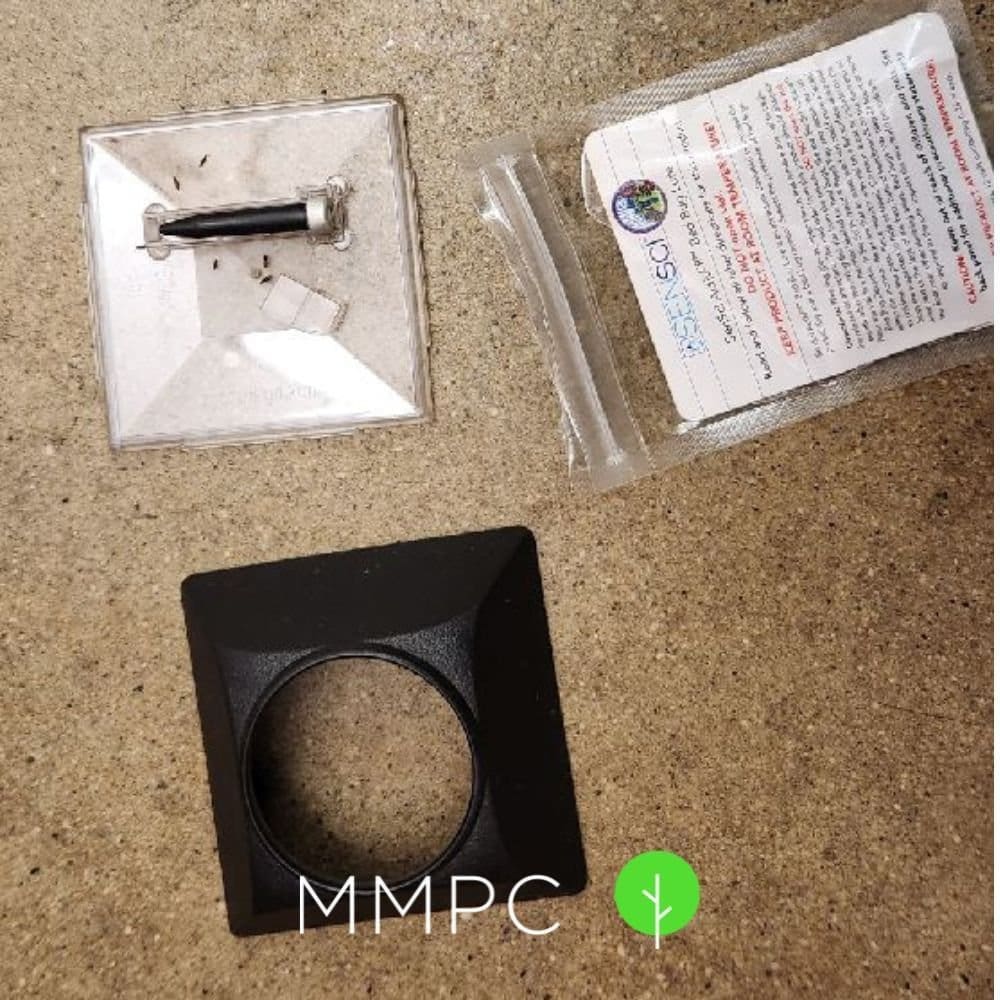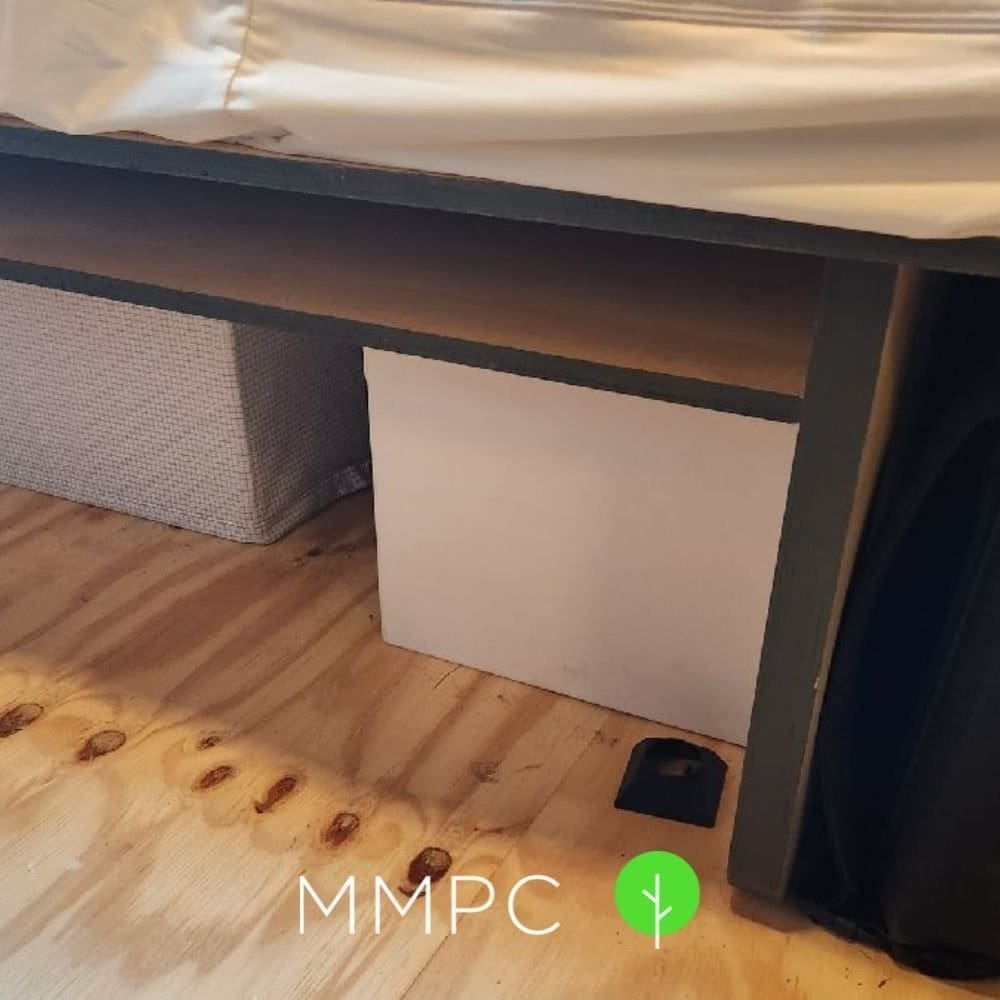Bed Bug Traps: Common Types & How They Work
By:
Updated:


Bed bug traps are essential tools for early detection and monitoring of bed bug infestations. These simple, cost-effective devices can help identify infestations and slow their spread.
Overview
Bed bug traps, also known as monitors, are small devices designed to catch or collect bed bugs. As professionals, we usually refer to them as monitors because they’re useful diagnostic tools for (1) collecting evidence of bed bugs and (2) monitoring the severity of an infestation over time.
There are two main types: passive and active.
- Passive traps: These use glue or pitfalls to passively catch bed bugs as they pass by, stopping them from reaching their intended target. To be effective, they must be placed in areas where bed bugs frequently travel, such as under the legs of beds or other furniture.
- Active traps: These use attractants to actively lure bed bugs out of hiding before capturing them. Active traps work by mimicking signals bed bugs use to communicate or find their host. Examples of lures include pheromones, carbon dioxide, and heat.
While passive traps are typically less expensive and easier to set up, active traps may be faster at detecting and capturing bed bugs, depending on the situation.
Do They Work?
These devices are great at doing what they’re designed for: detection and monitoring. Studies have shown that they are more accurate than visual inspections in detecting low-level infestations.1 Additionally, they can slow down the growth of a bed bug population by physically catching and removing bed bugs, thereby reducing bites.
However, traps alone will NOT solve a bed bug infestation.
This is because they don’t catch 100% of bed bugs. Most traps are only effective within a limited range, and it may take several days or longer to catch anything (since bed bugs feed once every 3–7 days). During that time, bed bugs continue to reproduce and spread. They also need to be regularly cleaned or replaced in order to stay effective, which can be a challenge for non-professionals.
When to Use Them
In a typical infestation, bed bugs reproduce quickly and often spread to nearby rooms or neighboring apartments. Early detection is critical in managing bed bug infestations—catching them early reduces the complexity and cost of treatment.
Consider using traps when:
- You want to check for the presence of bed bugs in an area, such as a bedroom.
- You have bed bugs and want to prevent them from reaching sleeping areas.
- You’ve recently treated your home for bed bugs and want to confirm that the extermination was successful.
At MMPC, we use a combination of traps, K9 inspections, and treatment programs to find and eliminate bed bugs with maximum accuracy.
Common Types


Interceptors
Bed bug interceptors are passive monitors resembling plastic dishes with two concentric walls and a pitfall between them. They’re great because they’re inexpensive and easy to set up. At MMPC, we often use ClimbUp interceptors to monitor bed bug activity between inspections and treatments.
How They Work
Bed bugs climb up the rough-textured outer walls of the interceptor, fall into the pitfall, and are unable to climb out of the smooth, slippery inner walls.
Interceptors are placed under the legs of beds or other furniture to catch bed bugs trying to climb up or down, effectively creating a barrier between the floor and the furniture.
Studies show that interceptors can catch bed bugs with a 93% detection rate over 7–14 days.2 Larger numbers of interceptors (8–40 per room) can detect bed bugs in 1–2 weeks, while smaller numbers may take up to 4 weeks.3
How to Use
- Move the infested bed or furniture a few inches away from the wall.
- Ensure that bedding or furniture skirts are not touching the floor.
- Place an interceptor under each leg of the bed or furniture.
- Check traps after at least a week and dispose of captured bed bugs in sealed plastic bags.
- Clean traps every 2–4 weeks to prevent dust buildup, and re-lubricate the inner walls with talcum powder to maintain effectiveness.


Volcano Monitors
Volcano monitors from SenSci can function as both passive or active traps, depending on whether a lure is used. We recommend using them with a lure for monitoring vacant areas, where the lack of a live host makes interceptors less effective.
How They Work
These small, pyramid-shaped devices have sloped walls that are easy for bed bugs to climb. At the top is an opening to a large well that bed bugs fall into. A clear panel at the bottom makes it easy to check if any bed bugs have been caught.
A lure that mimics chemicals found on human skin is placed at the bottom of the well, which attracts bed bugs looking for a blood meal.
How to Use
- Assemble the volcano monitor, insert the lure, and snap the bottom into place.
- Place the monitor(s) on the floor next to the bed or other areas where bed bugs are likely to be active.
- Remove captured bed bugs by opening the bottom over a toilet or into a plastic bag for disposal.
- Replace the lures every 1–3 months, depending on the manufacturer’s recommendations and your monitoring needs. From our experience, it’s best to replace them once a month.
Glue Traps
Glue traps are an essential tool used by pest control professionals for a variety of indoor pests. The ones designed to catch bed bugs typically contain an attractant to lure bed bugs into the adhesive.
These are the least expensive type of traps, but they are not as effective as interceptors or volcano monitors.
Carbon Dioxide (CO2) Traps
Bed bugs are attracted to the carbon dioxide we exhale while we sleep. CO2 traps use this behavior to lure them out of hiding and into either a pitfall or adhesive.
Studies have shown that CO2 traps catch significantly more bed bugs than traps without carbon dioxide.4 Some also combine carbon dioxide with other lures, such as heat or pheromones, to mimic a sleeping person.
Pheromone Traps
Pheromone traps use chemical lures that imitate pheromones or kairomones, which signal bed bugs to aggregate or feed. These devices typically use a pitfall or adhesive mechanism to capture bed bugs. Volcano monitors, as described above, fall into this category.
While they are more expensive, the main benefit is that pheromone traps generally work faster in low level infestations since they actively draw bed bugs out of hiding. They are also effective in vacant units because they don’t require a live host for bait.
Conclusion
Traps, or monitors, are valuable tools for detecting and monitoring bed bug infestations. However, they are not a standalone solution. While traps can catch bed bugs and reduce the occurrence of bites, they won’t eliminate an infestation on their own. For best results, we recommend using them alongside other methods like as K9 inspections and professional treatments.

About the Author
References
- Wang, C., T.J. Gibb., and G.W. Bennett. 2009b. Interceptors assist in bed bug monitoring. PCT. 37(4): 112, 114. https://www.pctonline.com/article/pct0811-bed-bug-monitor-detection-tools-techniques/ ↩︎
- Cooper, R., Wang, C., & Singh, N. (2014). Accuracy of Trained Canines for Detecting Bed Bugs (Hemiptera: Cimicidae). Journal of Economic Entomology, 107(6), 2171–2181. https://doi.org/10.1603/ec14195 ↩︎
- Entomology Today. (2017, April 20). A Model for Effective, Reduced-Cost Bed Bug Monitoring. Entomology Today. https://entomologytoday.org/2017/04/20/a-model-for-effective-reduced-cost-bed-bug-monitoring/ ↩︎
- Singh, Narinderpal, et al. ‘Effect of Trap Design, Chemical Lure, Carbon Dioxide Release Rate, and Source of Carbon Dioxide on Efficacy of Bed Bug Monitors’. Journal of Economic Entomology, vol. 106, no. 4, Oxford University Press (OUP), Aug. 2013, pp. 1802–1811, https://doi.org/10.1603/ec13075 ↩︎


